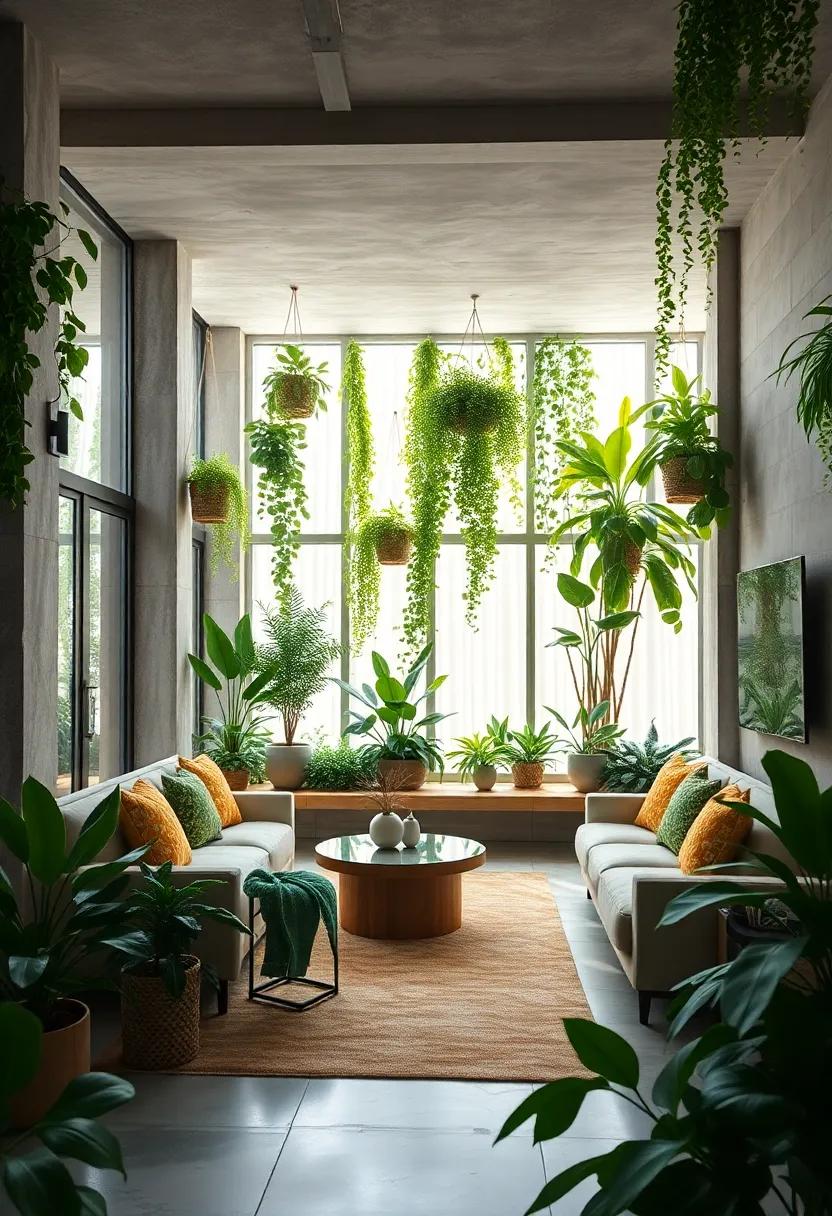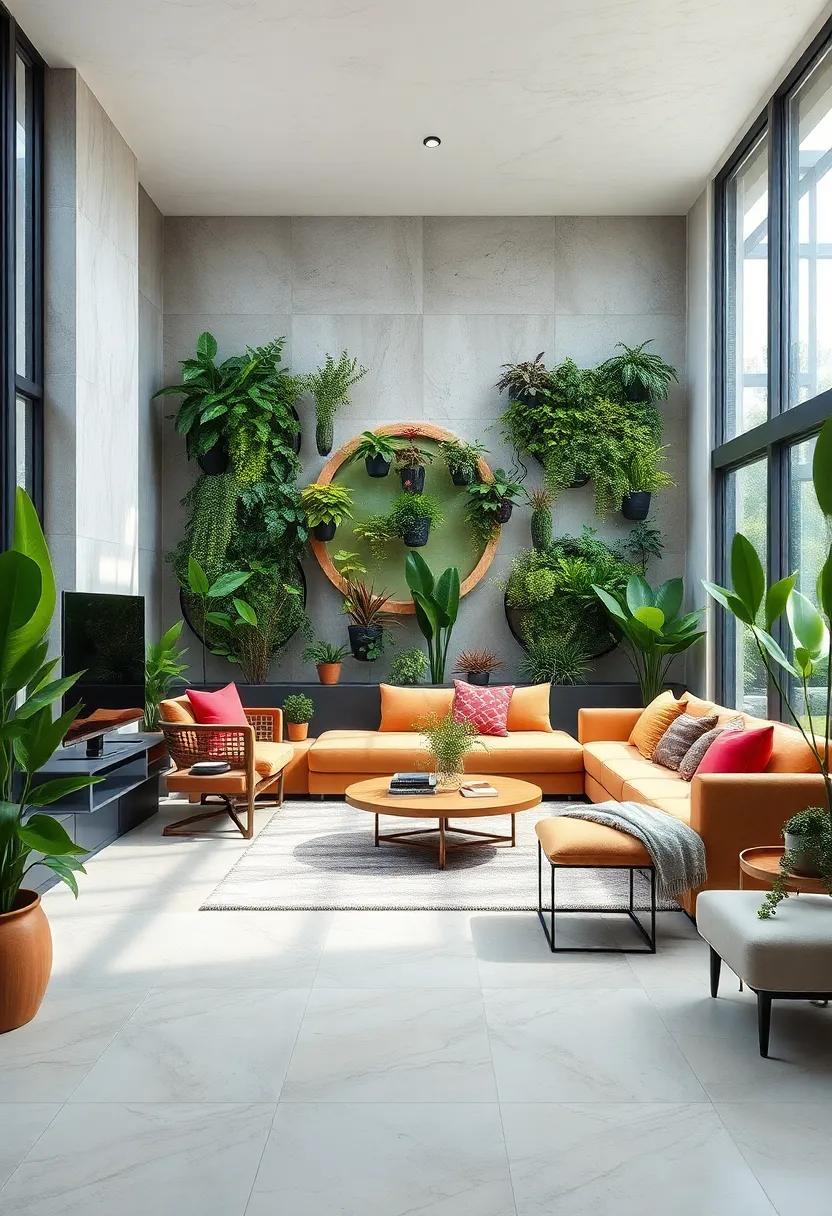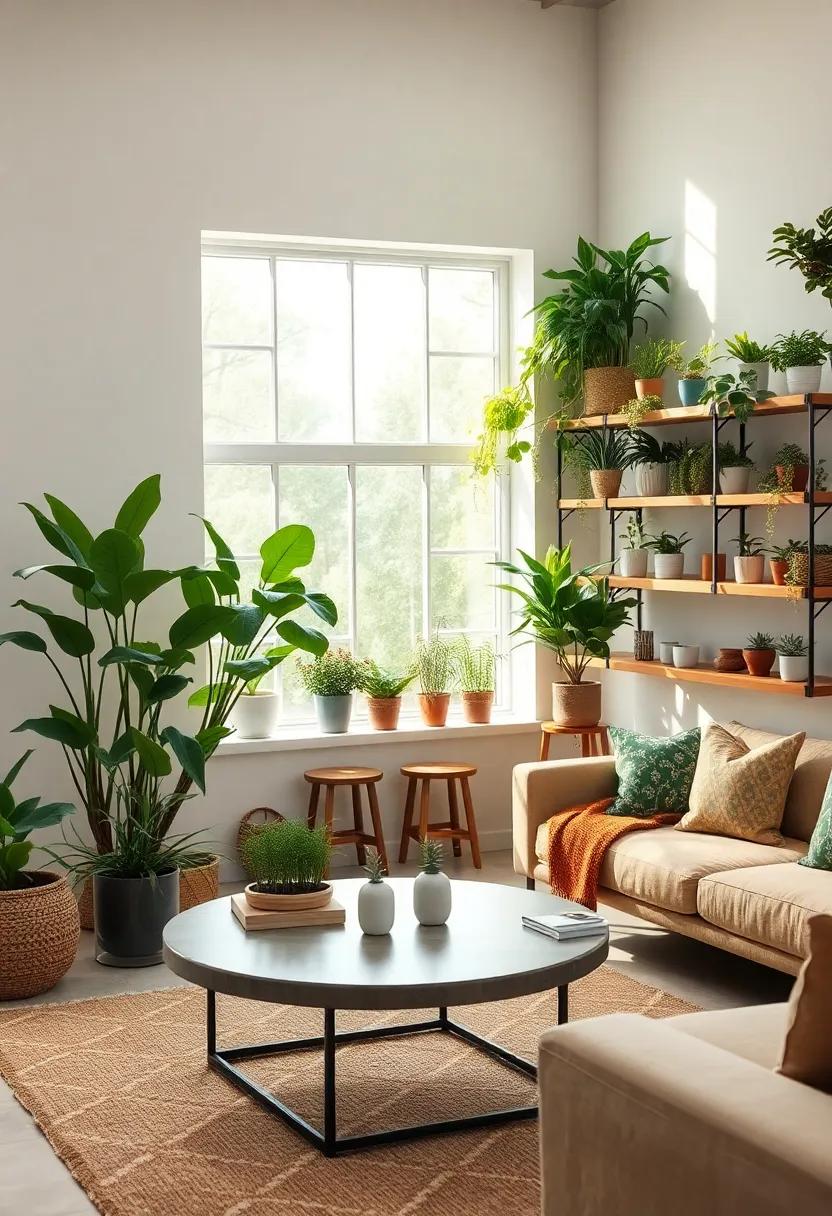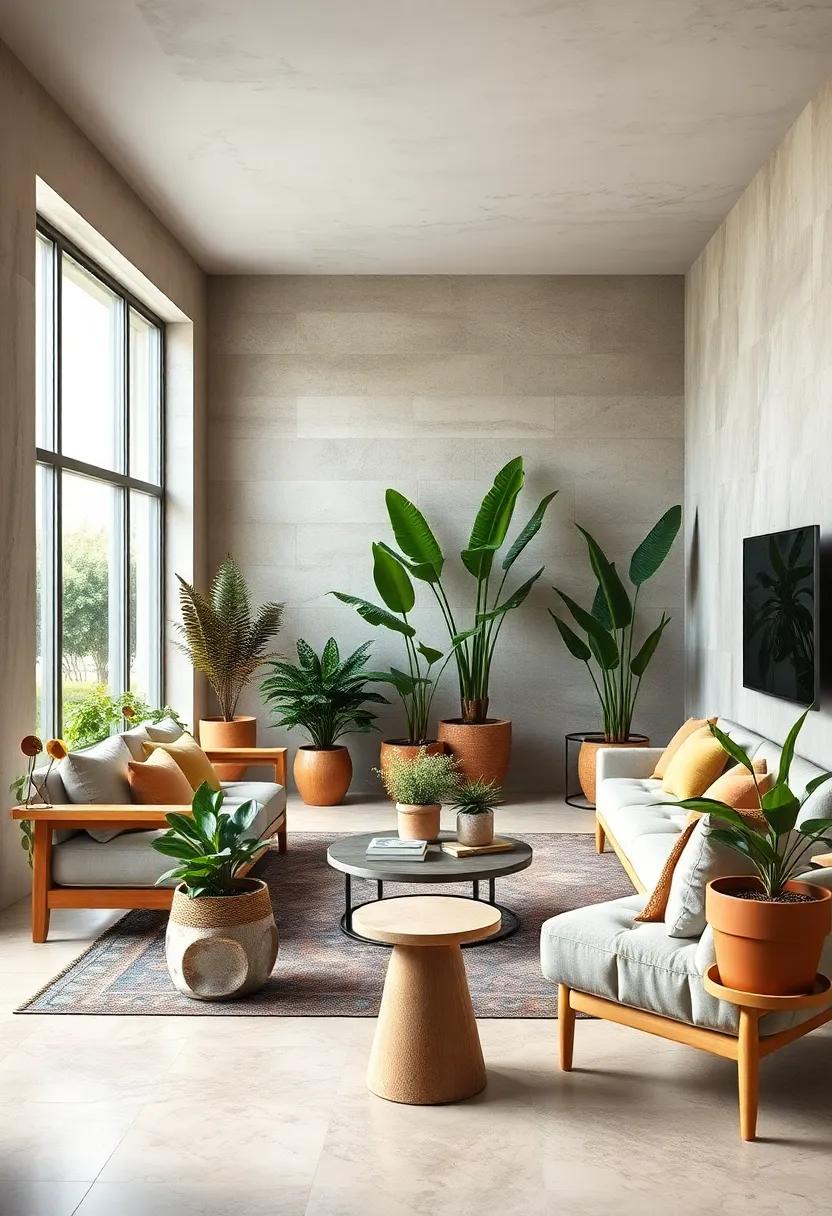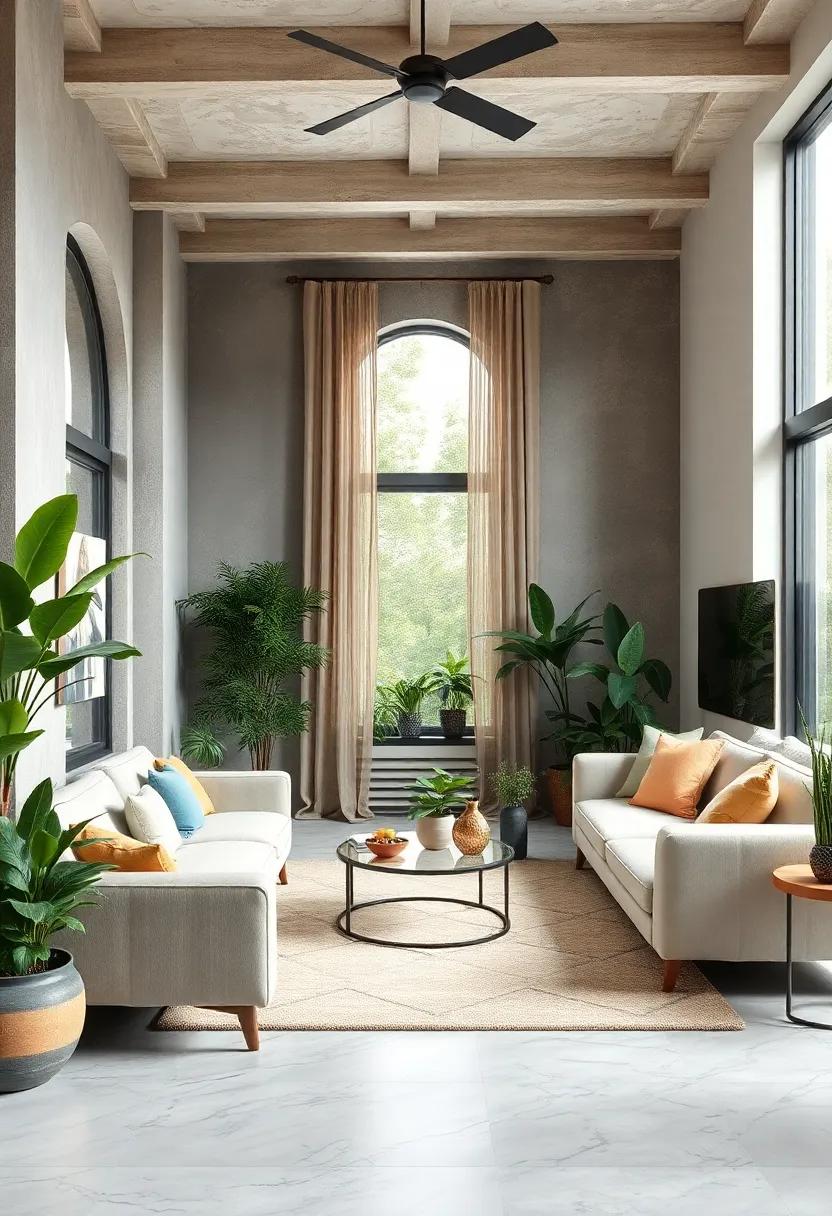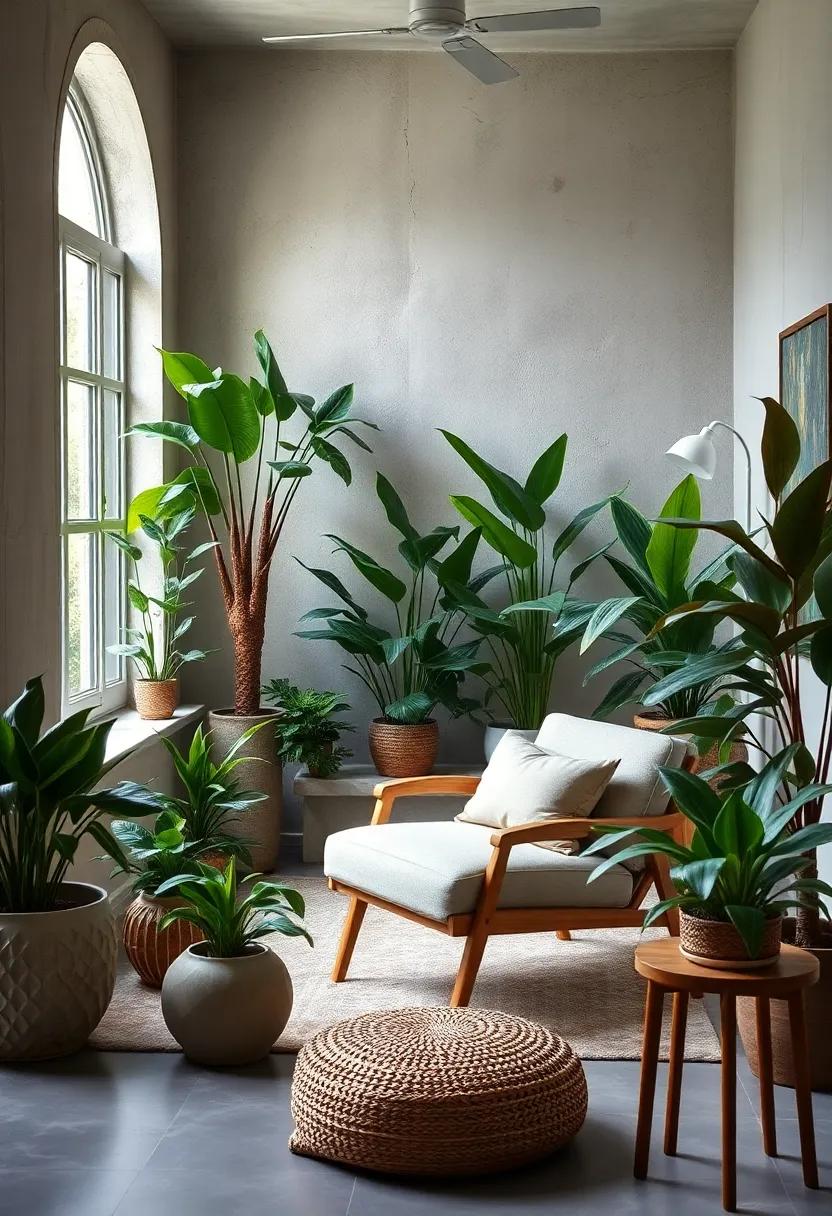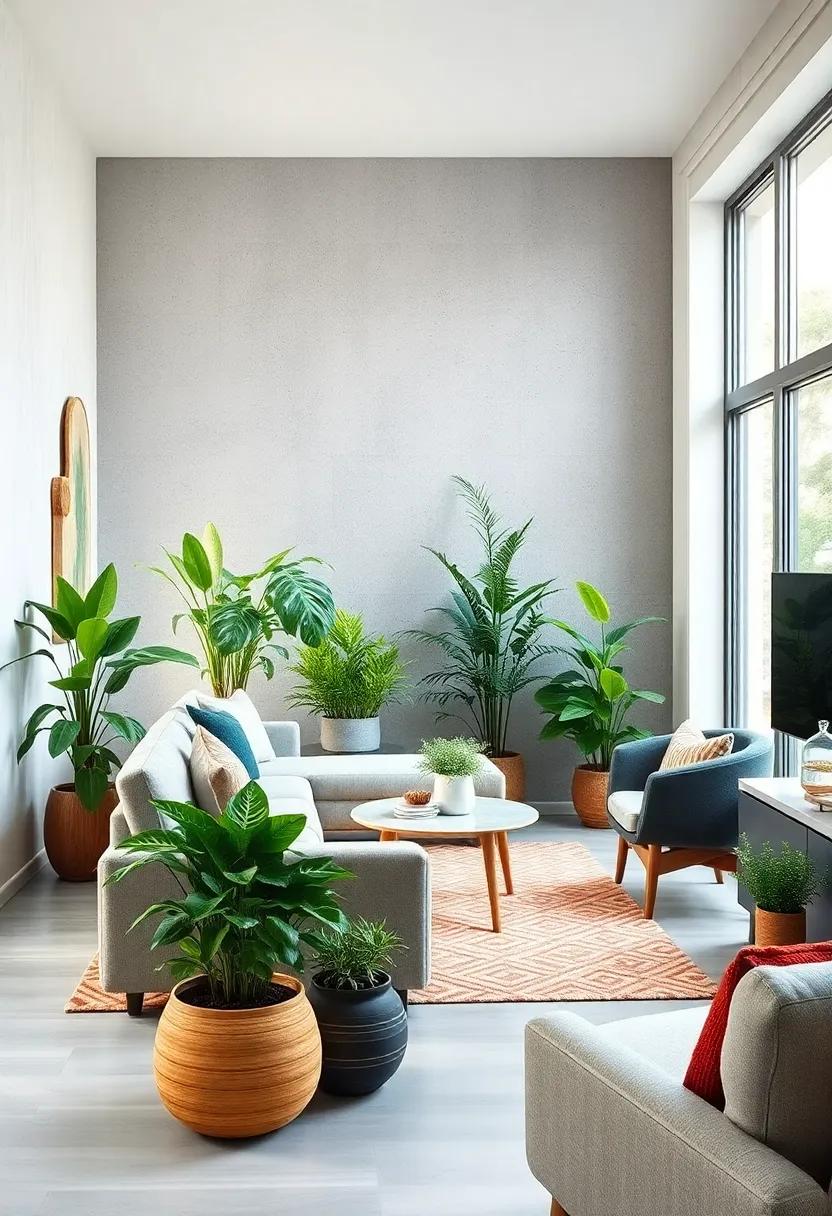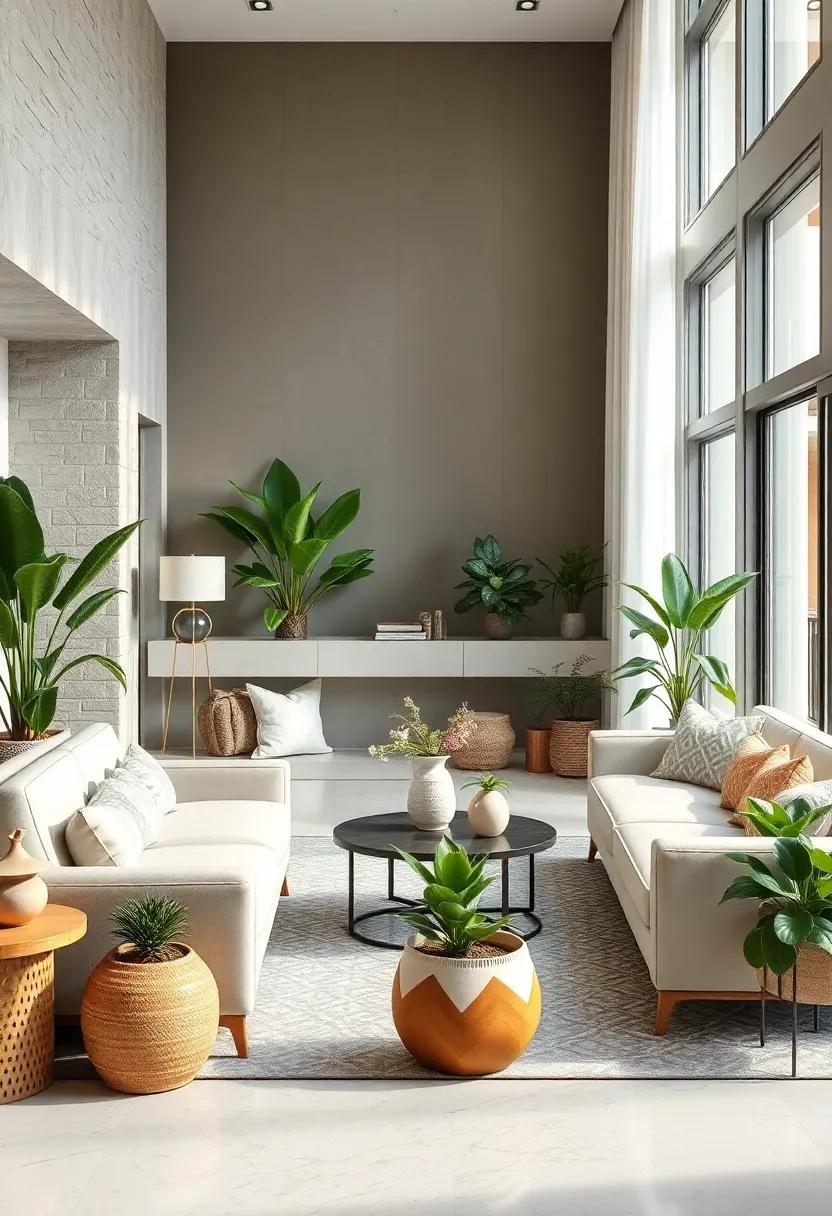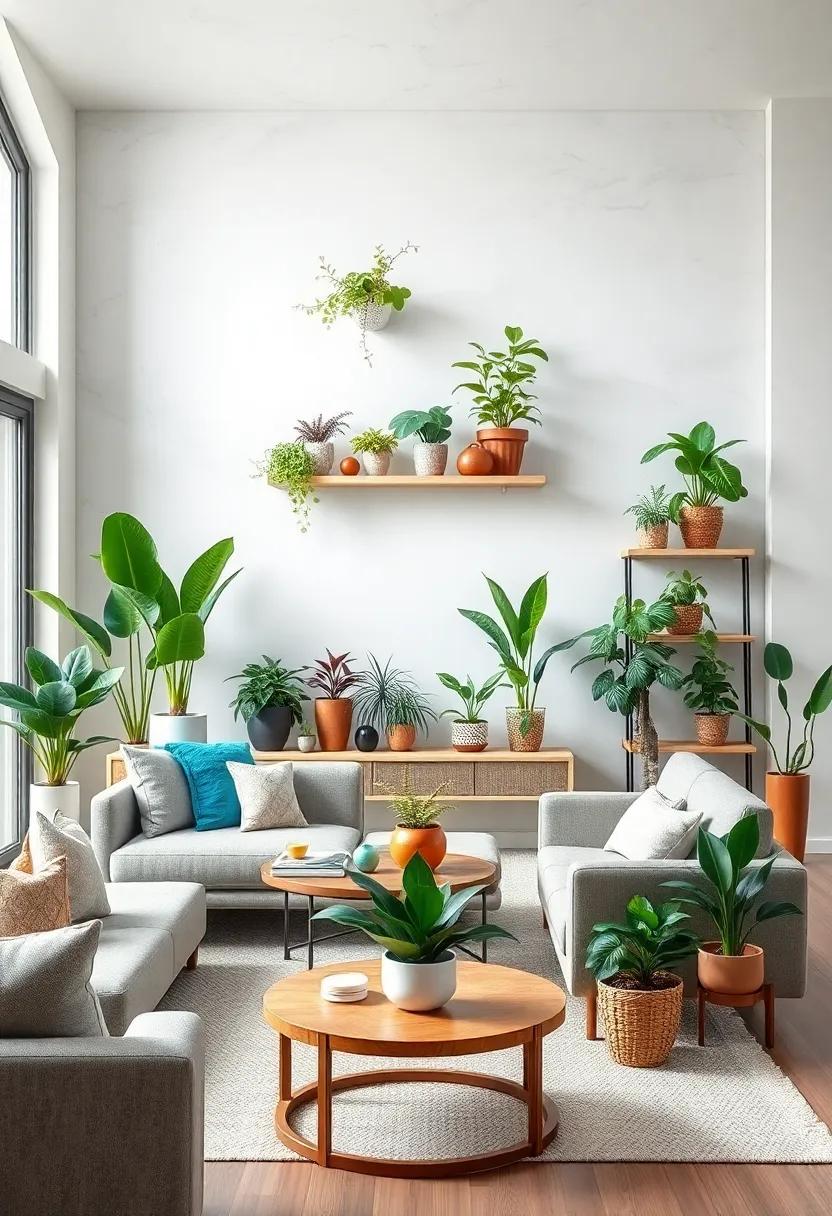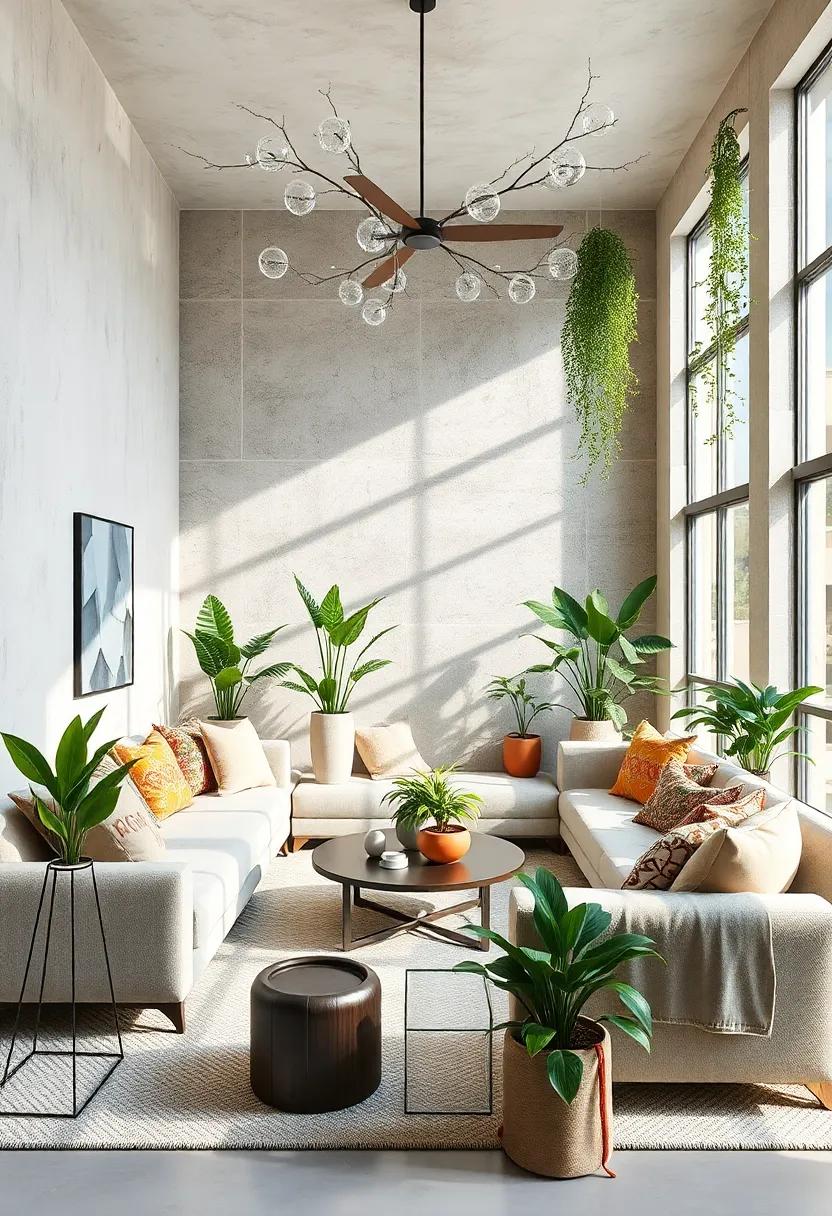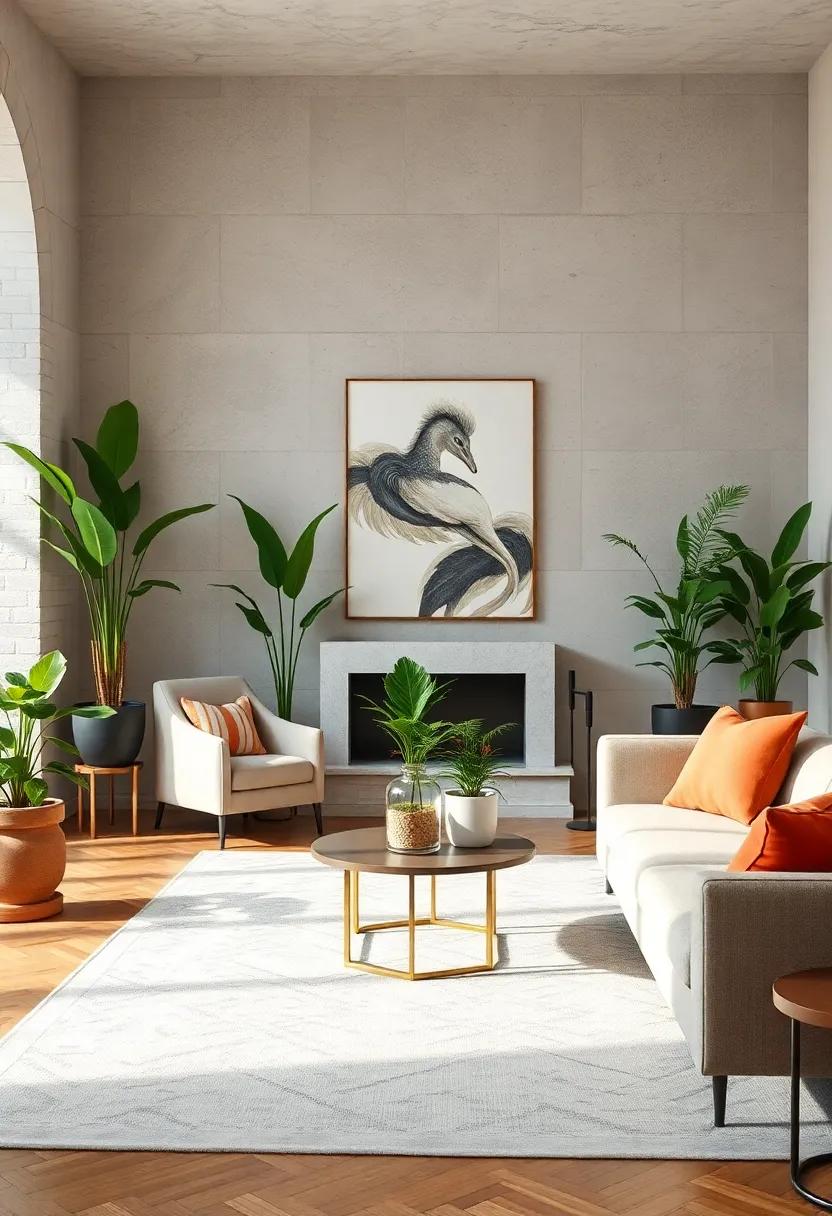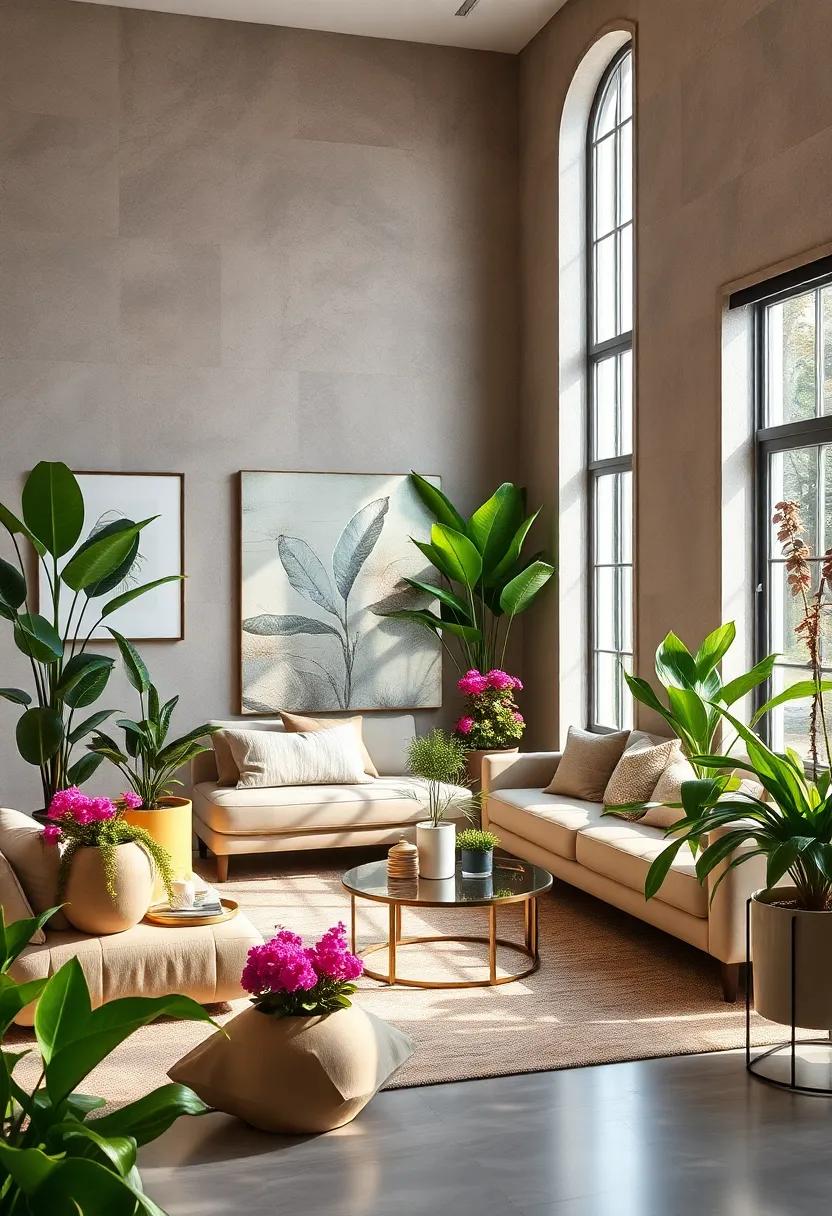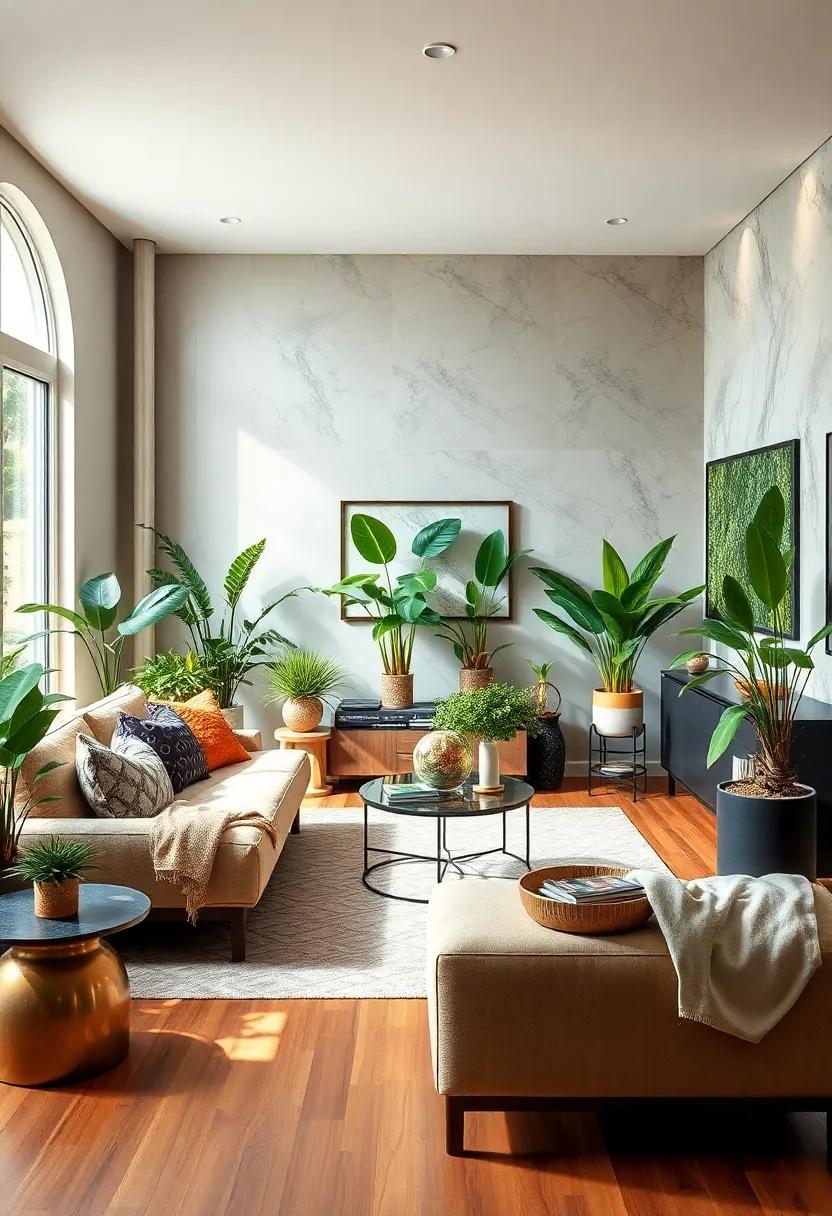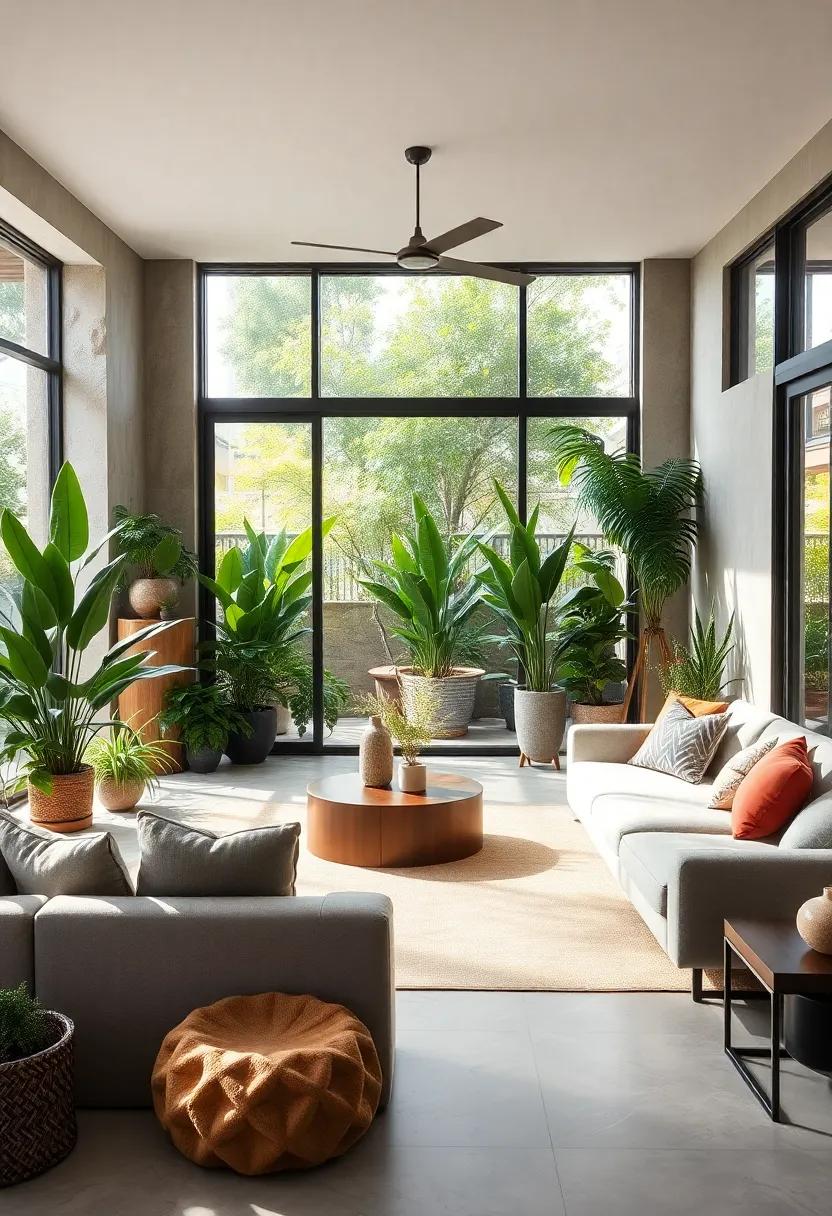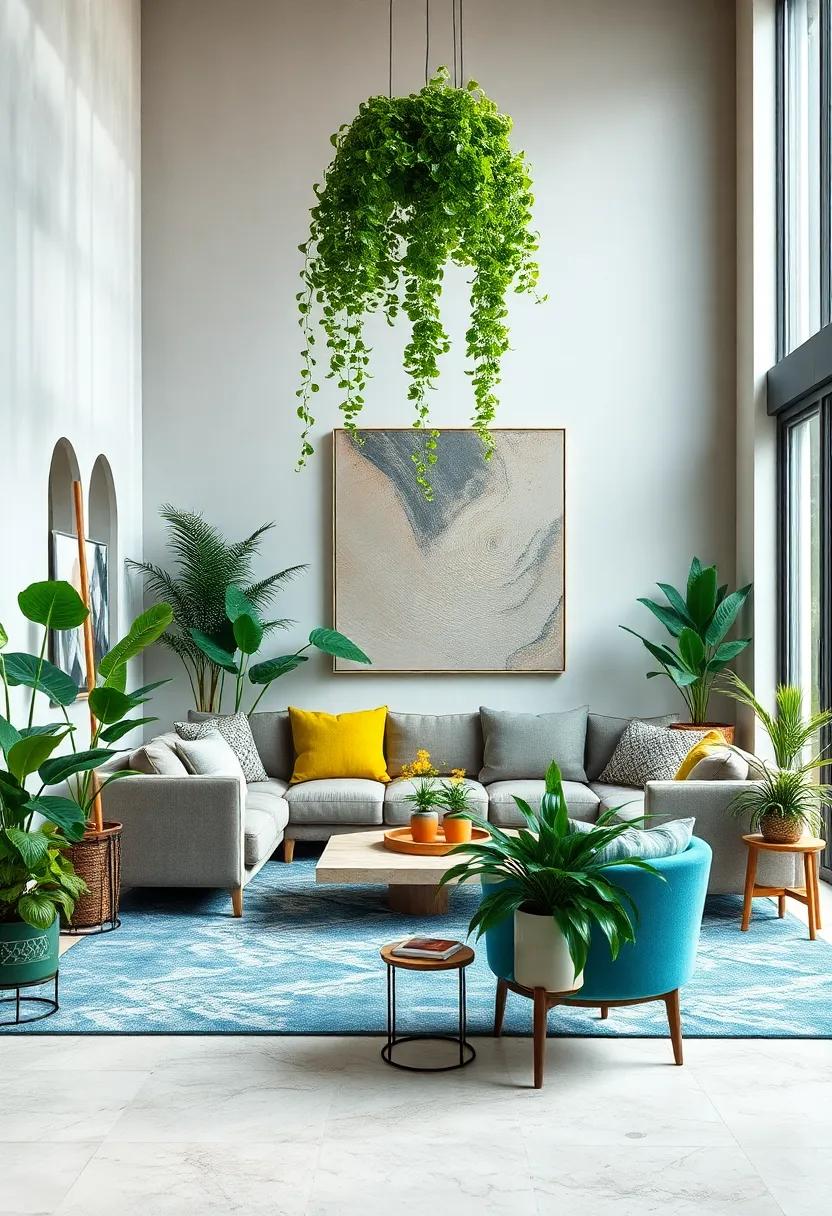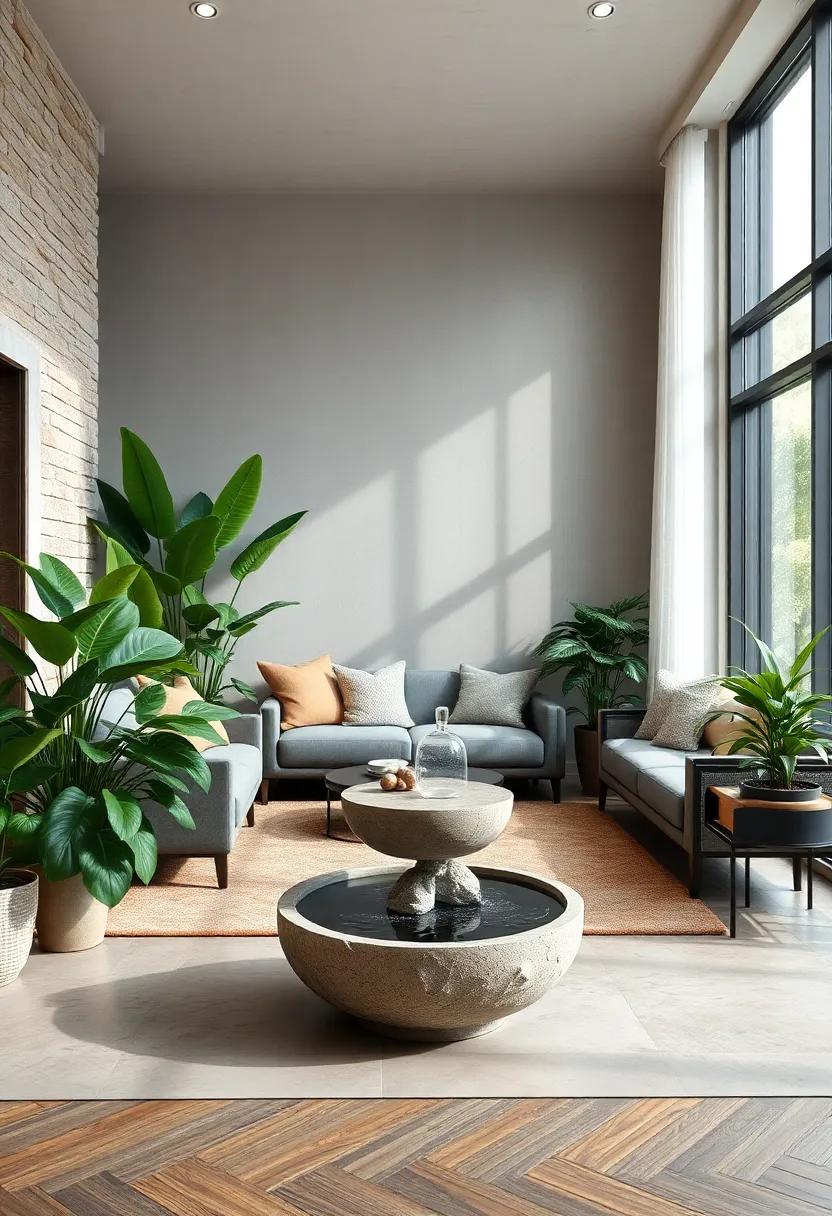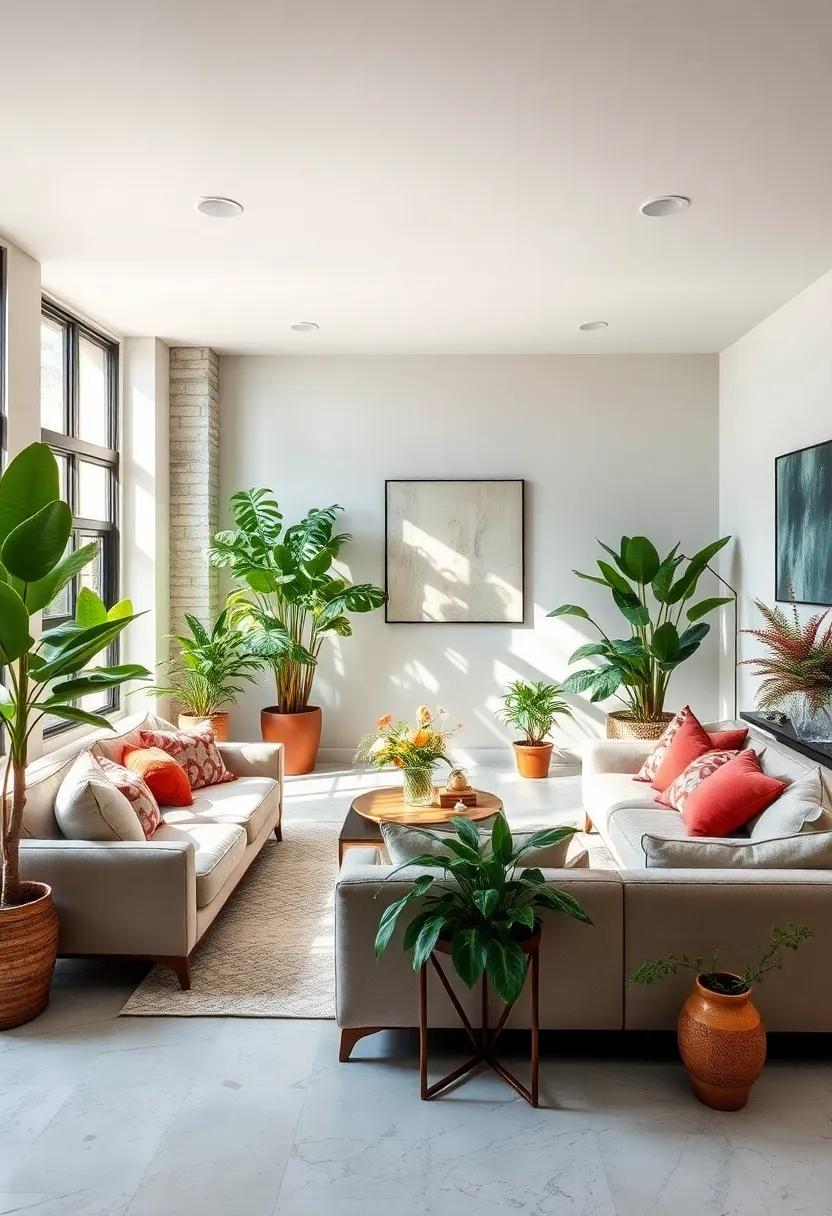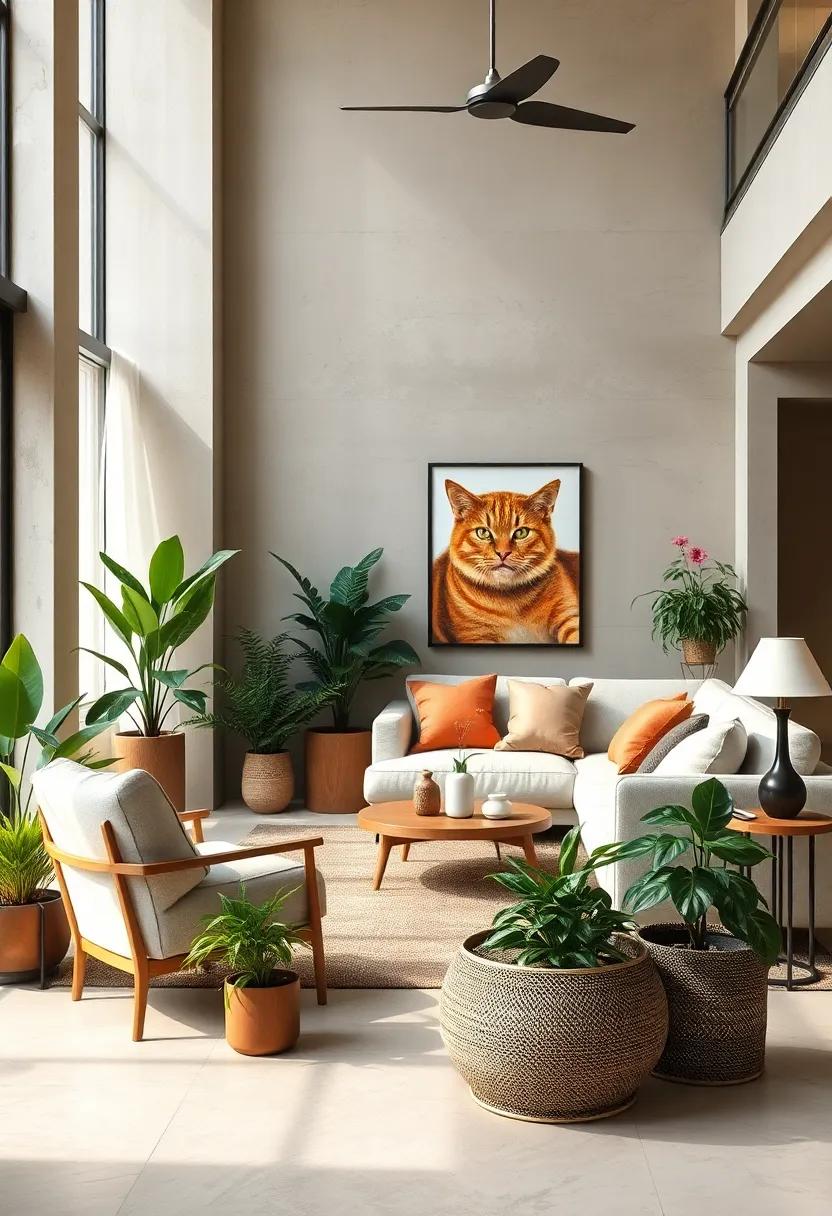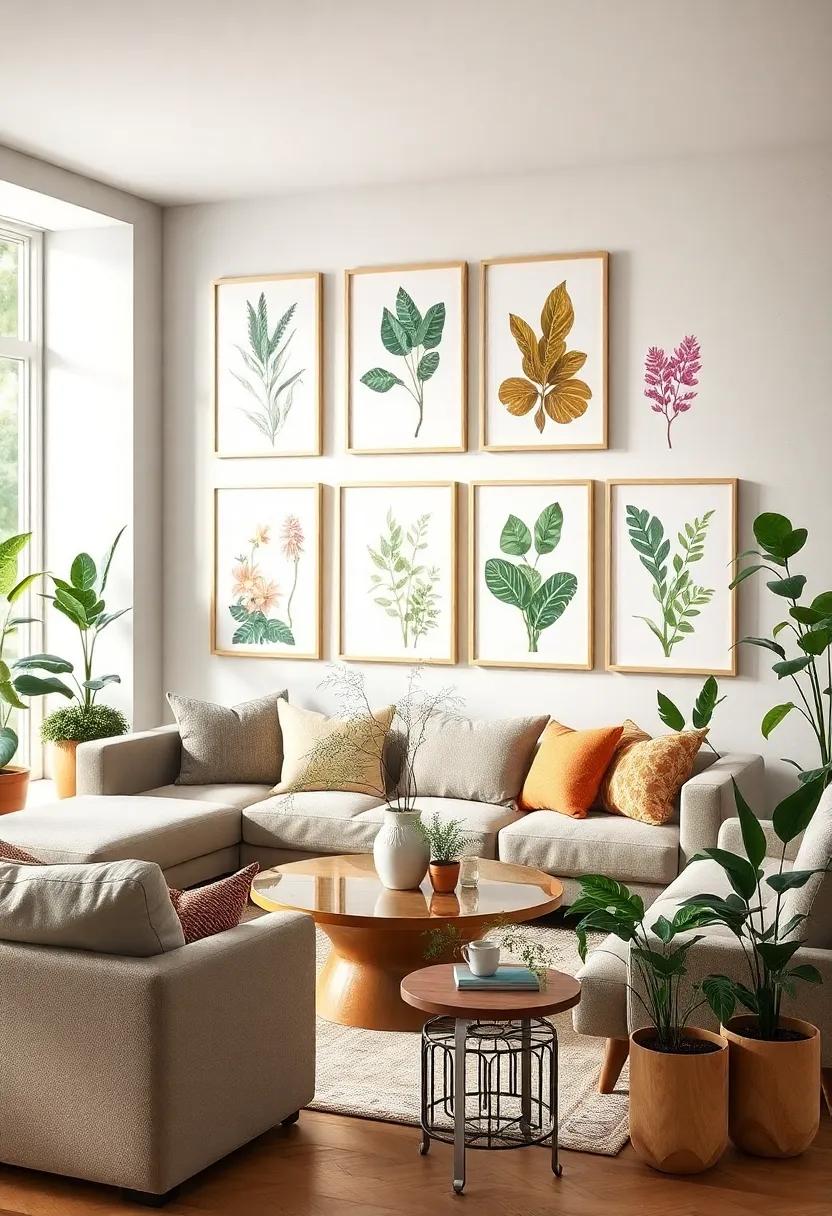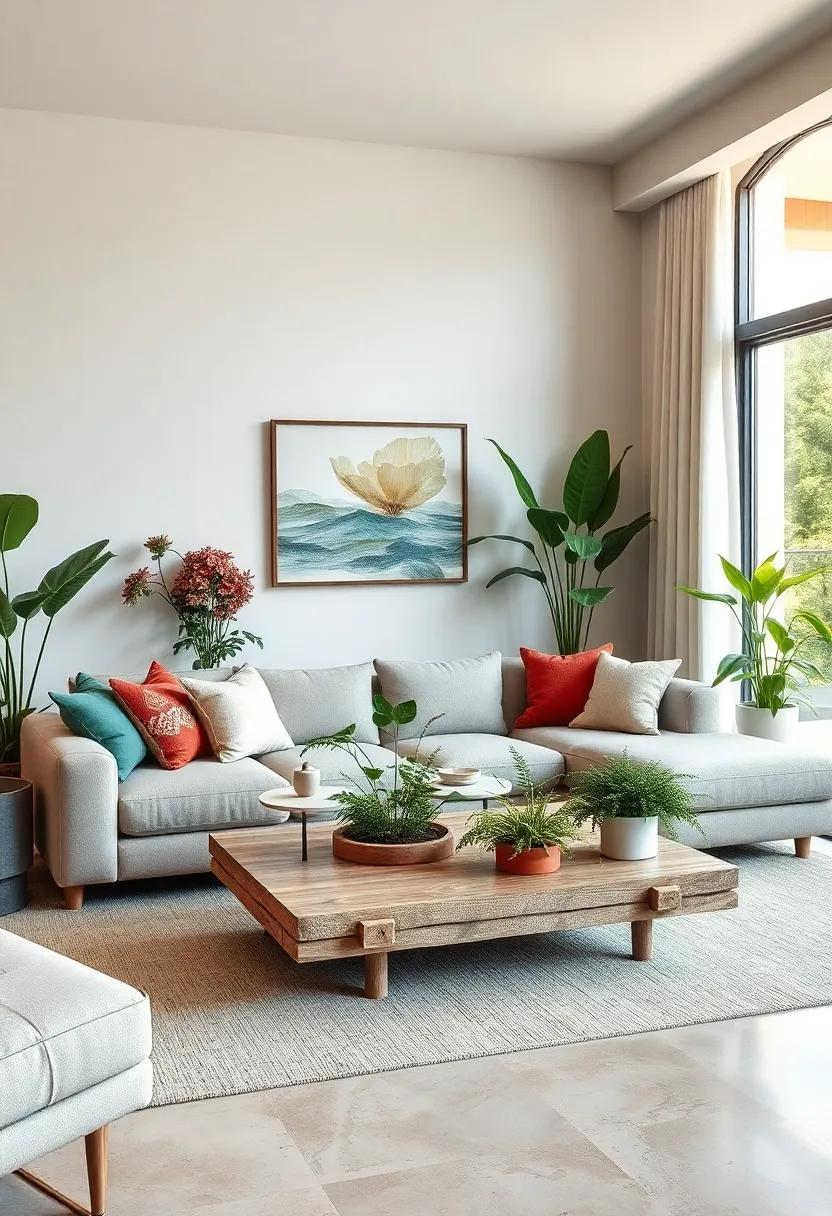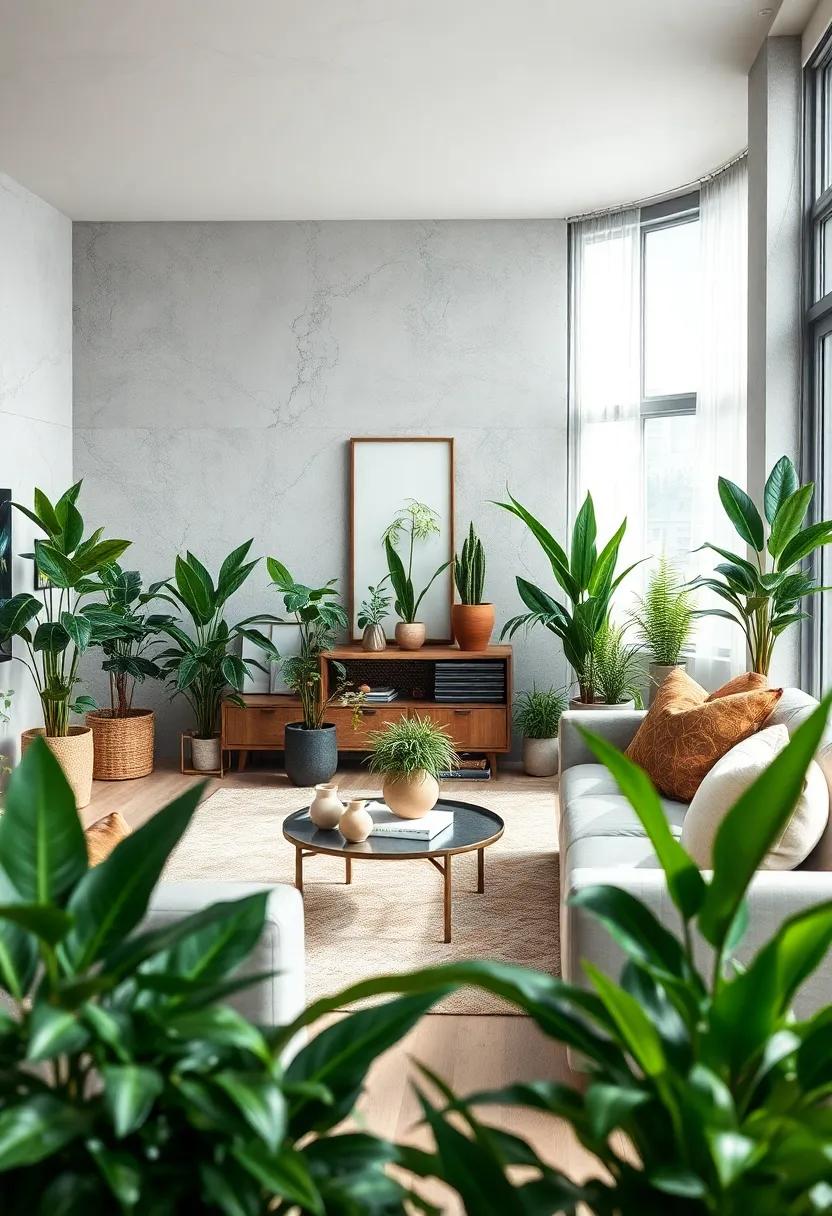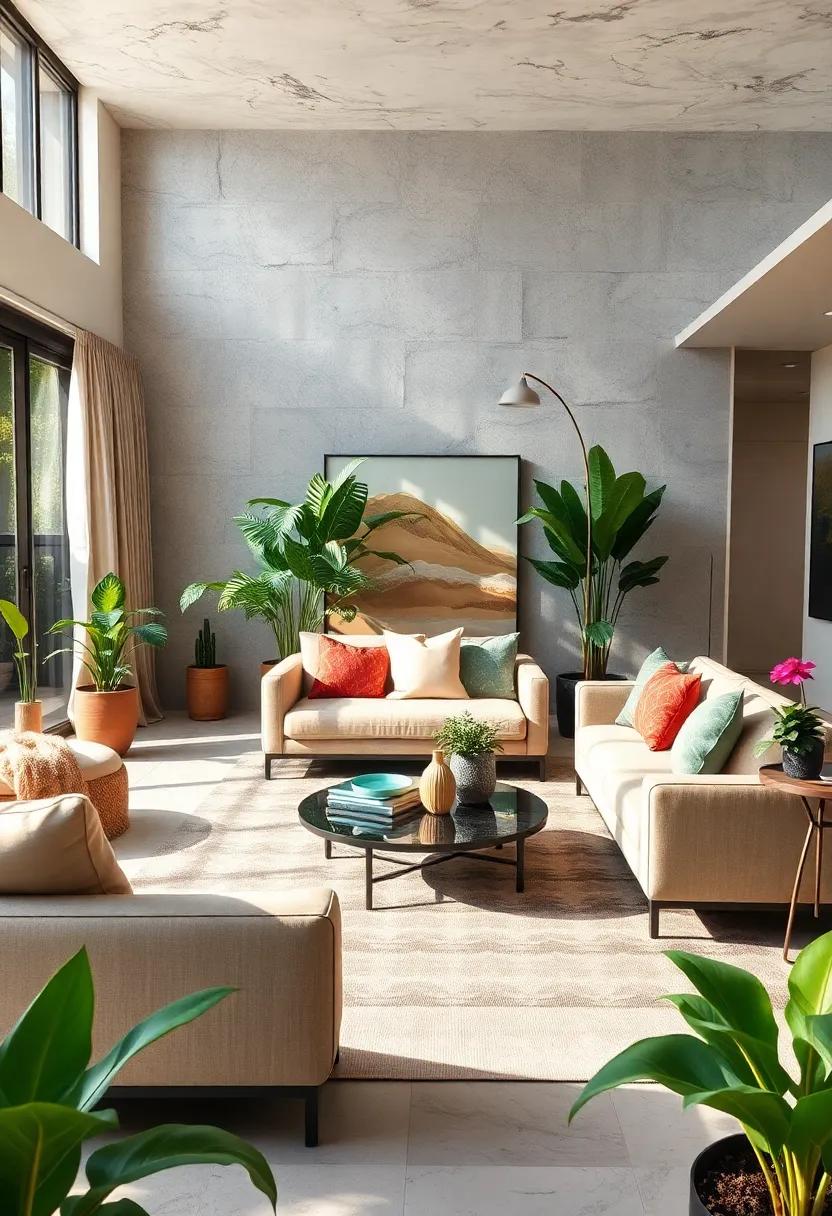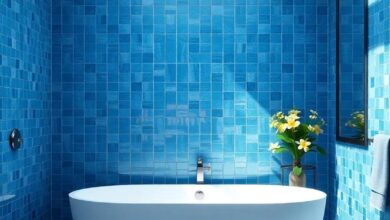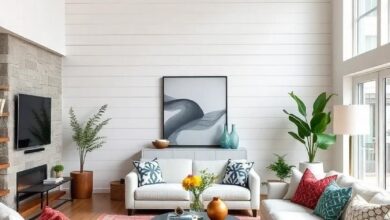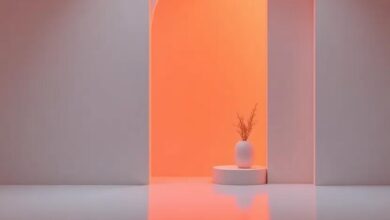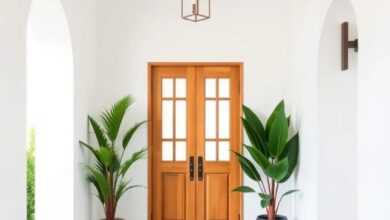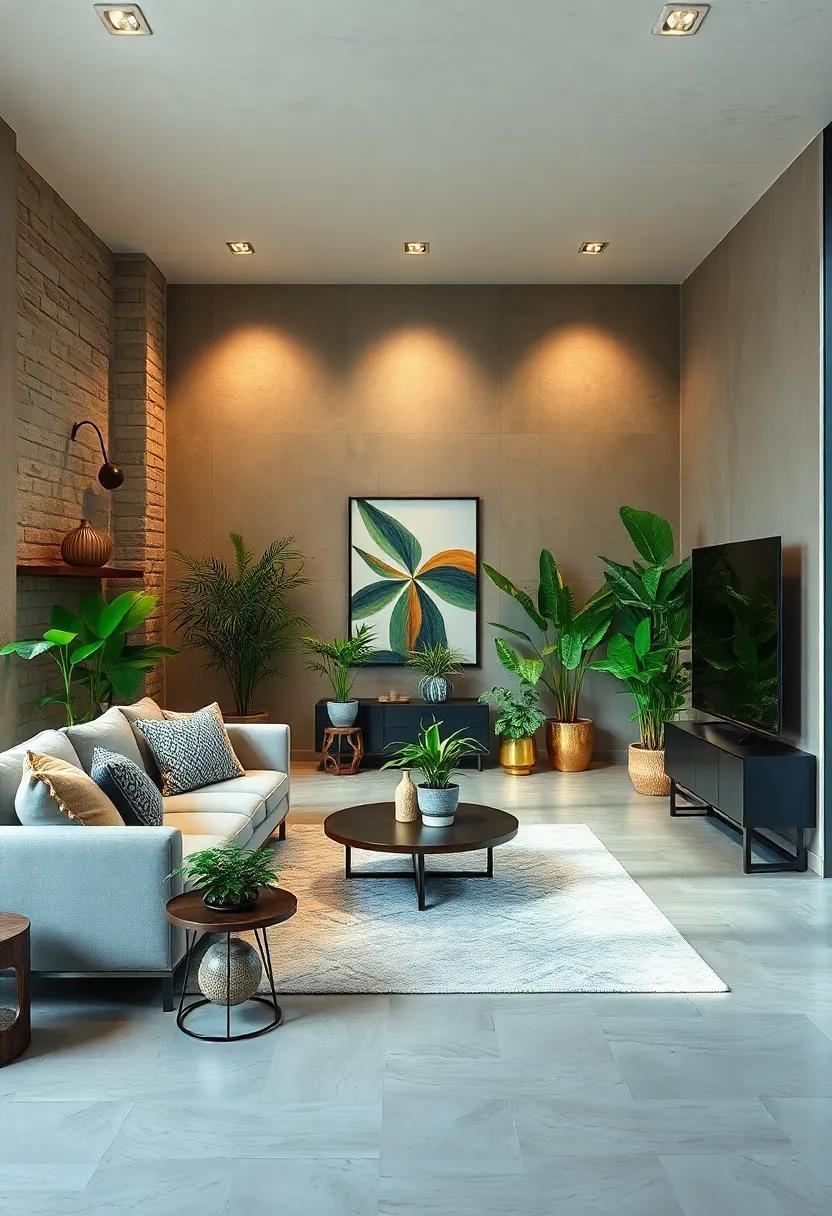
24 Inspiring Biophilic Living Rooms: Transform Your Space with Indoor Plants
In today’s fast-paced world, finding harmony between our indoor environments and the natural world has never been more crucial. Enter biophilic design—the art of bringing the outdoors in, creating spaces that promote well-being and connection too nature. In this listicle,we present 24 inspiring living room transformations that embody this aesthetic,showcasing how indoor plants can fully elevate your home atmosphere.
Whether you’re an experienced plant parent or just beginning your green journey, you’ll discover a diverse array of design ideas that incorporate lush foliage and botanical accents. from minimalist approaches to vibrant jungle vibes, each living room serves as a canvas illustrating the profound impact of plants on our living spaces. By exploring this collection, you can expect to gain practical insights, helpful tips, and plenty of inspiration, empowering you to transform your own space into a sanctuary of serenity and vitality. Get ready to breathe new life into your home!
Embrace the jungle vibe with floor-to-ceiling plants that bring a lush, green ambiance to your living room, creating an oasis of tranquility
Transform your living room into a serene retreat by incorporating an array of indoor plants that stretch from floor to ceiling. This vertical garden effect infuses your space with vibrant shades of green and creates a powerful natural aesthetic, perfect for fostering a serene atmosphere. Choose plants like Fiddle Leaf Figs, Snake Plants, and Monstera Deliciosa, which not only add height but also bring texture and visual interest. Their lush leaves will softly diffuse sunlight, casting enchanting shadows and making your living room feel like a tropical sanctuary.
To enhance your jungle vibe, consider utilizing unique pots and planters that complement your decor style. From rustic wooden stands to sleek modern pedestals, the right containers can accentuate the beauty of your plants. additionally, layering various sizes of greenery in your design will create depth and an inviting atmosphere. Integrate accessories like textured throws and natural woods to harmonize your living room’s aesthetic with the surrounding plant life, cultivating an oasis of tranquility that invites relaxation and reconnects you with nature.
Transform your walls into living art with vertical gardens that not only save space but also serve as a stunning focal point in your home
Elevate your living room aesthetics with the lush beauty of vertical gardens that can seamlessly integrate into your existing decor. These green masterpieces not only provide a vibrant splash of nature but also cleverly optimize your wall space, making them a functional choice for compact living areas.Imagine the visual impact of a plant wall, where a variety of flora—ranging from fiddle leaf figs to string of hearts—flows effortlessly from your ceiling to the floor, creating a serene retreat within your home.
Moreover, the benefits of vertical gardens extend beyond their visual appeal. They enhance air quality by acting as natural air filters, reducing indoor pollutants and providing your space with a fresh ambiance. Consider incorporating moss panels, herb walls, or dramatic succulents to personalize your vertical garden. You could even think of adding a lighting system to highlight your green wall after sunset, turning your space into a mesmerizing evening oasis. Here’s a speedy overview of ideas to inspire your own transformation:
| Garden Type | Key Plants | Benefits |
|---|---|---|
| Herb Garden | Basil, Mint, Thyme | fresh herbs for cooking; pleasant aroma |
| Succulent Wall | Aloe Vera, Echeveria, Sedum | Low maintenance; unique textures |
| Moss Panel | Reindeer Moss, Sheet Moss | Sound absorption; calming atmosphere |
| Foliage Display | Pothos, Philodendron, Ferns | Enhances air quality; lush aesthetics |
Incorporate hanging planters that cascade from the ceiling, adding a playful touch and maximizing floor space while showcasing your favorite greenery
Hanging planters offer a charming and whimsical way to bring nature into your living space, creating a dynamic visual effect as they cascade downwards.By utilizing the vertical plane, these suspended displays not only save valuable floor space but also direct the eye upwards, giving the illusion of a more expansive room. Imagine vibrant ferns, lush pothos, or delicate trailing ivy gracefully swaying above, creating a serene oasis that invites relaxation and connection with nature. This approach enables you to showcase a variety of plants, each thriving in its habitat while contributing to the overall aesthetic.
Consider mixing different styles and sizes of hanging planters to enhance the playfulness of your design. Groupings can range from lightweight macramé holders to more structured metal or ceramic vessels, each with its own unique texture and character. Layering plant heights can create depth, with smaller, trailing plants complementing larger, upward-growing species. Here are some plant options that work seamlessly in hanging arrangements:
| Plant Type | Light Requirements | Water Needs |
| Pothos | Low to Bright indirect | Moderate |
| Spider Plant | Bright Indirect | Low |
| String of Hearts | Bright Indirect | Low |
| Ferns | Low to Medium | High |
Incorporating hanging planters adds not only lively colors but also texture and movement to your interior. Experiment with different plants to cultivate a unique atmosphere,whether it be relaxing or invigorating,depending on the plants you choose. The result will be a stunning biophilic living room that embodies both style and sustainability—an enchanting space where nature flourishes overhead.
use a mix of textures with broad-leafed plants and delicate ferns, creating a visually rich ecosystem that draws the eye and engages the senses
Creating a captivating indoor garden requires more than just selecting a variety of plants; it’s about weaving together a rich tapestry of textures and forms. Broad-leafed plants, such as the majestic monstera or the elegant philodendron, serve as the bold foundation of your green oasis. Their large leaves command attention and provide a striking contrast to the delicate fronds of ferns, like the airy maidenhair or the lush Boston fern. This duo not only enhances the aesthetic appeal but also invites a sensory experience, as the varying shapes and sizes playfully interact in light and shadow.
To further enhance this engaging ecosystem, consider adding a selection of smaller accent plants that complement the theme. For exmaple:
- Pothos – with cascading vines that add movement
- Calathea – showcasing intricate patterns that mesmerize
- Cactus – introducing a striking juxtaposition of spiky textures
This diverse mix ensures that your space is not only visually rich but also invites touch and exploration. Arrange the plants at varying heights and angles to create depth, allowing the unique features of each species to shine. A well-considered blend of leafy giants and soft, delicate ferns turns your living room into a tranquil sanctuary, effortlessly drawing the eye and soothing the spirit.
Opt for low-light plants like snake plants or pothos, perfect for brightening up corners that rarely see sunshine while maintaining a fresh atmosphere
When it comes to enhancing the ambiance of your living space, low-light plants are the unsung heroes of interior design. Snake plants and pothos thrive in corners that don’t see much sunlight, ensuring that every nook of your room contributes to a vibrant atmosphere. These resilient greens not only purify the air but also add a splash of life to otherwise dull spaces. Consider incorporating a tall snake plant in a ceramic pot for a rustic feel or cascading pothos in a hanging planter to create visual depth. The striking shapes and textures of these plants effortlessly complement modern aesthetics while promoting serenity.
To offer a seamless integration into your existing décor, choose stylish pots that harmonize with your color palette. Here are some popular options:
| Plant | Ideal Pot Style |
|---|---|
| Snake Plant | Geometric ceramic pots |
| Pothos | Hanging macramé or minimalist pots |
By carefully selecting the placement of these plants, you can create focal points that draw the eye while softening the room’s edges. Whether you cluster multiple small pots on a shelf or let a single pothos vine drape elegantly down from a high ledge, these low-light warriors can transform any forgotten corner into a lush retreat, keeping your living room fresh and inviting.
Design a cozy reading nook surrounded by lush greenery, where the warmth of plants complements your favorite chair and invites relaxation
Imagine sinking into your favorite chair, enveloped by the soft embrace of greenery all around you. To achieve this calming oasis, consider the elements that will harmoniously blend comfort with nature. Start by selecting a snug, oversized chair, perhaps in a soft, neutral fabric that invites you to relax. Surround this sanctuary with a range of plant species: tall floor plants like Fiddle Leaf Fig or Snake Plant can add height and drama, while trailing plants such as Pothos and Philodendron can cascade beautifully from shelves above, creating a canopy of leaves. For added sensory pleasure,include fragrant herbs such as Lavender or Mint to infuse your nook with calming scents that enhance your reading experience.
To further maximize the serenity of your reading corner, curate a selection of accessories that reflect your personal style.A small, round side table can hold your favorite books and a warm cup of tea, while a soft, textured throw blanket draped over the chair invites you to snuggle in. Consider incorporating ambient lighting with a stylish floor lamp or string lights that add a gentle glow during evening reads. Using a plant stand to elevate smaller greenery, like Succulents or Spider Plants, not only draws the eye upward but also helps create layers within the space, enhancing the feeling of being enveloped in nature. With the right mix of plants and decor,your nook will become a beloved retreat where you can unwind and get lost in the pages of your favorite novels.
Create an indoor herb garden right in your kitchen corner, allowing fresh flavors to flourish while infusing your space with delightful aromas
Transform a cozy corner of your kitchen into a verdant haven by creating an indoor herb garden that not only enhances your culinary adventures but also adds a refreshing touch to your living space. Consider incorporating herbs like basil,cilantro,and mint,which thrive in small pots and can be easily accessed while cooking. Using stylish planters made of natural materials can complement your kitchen aesthetics, merging functionality with beauty. Opt for a south-facing window to maximize sunlight, or use grow lights if natural light is limited. Arrange your herbs visually by height, with taller plants in back and shorter ones in front, creating a lush, layered effect.
To add an extra layer of charm and practicality, consider creating a vertical herb garden using wall-mounted planters. This not only saves counter space but also transforms your wall into a stunning green feature. Add a bit of creativity with the following elements:
- Colorful pots: Choose pots in various sizes and colors to create an eye-catching display.
- Herb labels: Use chalkboard paint or tags to label your herbs, making it easy to identify them at a glance while adding a playful touch.
- Watering system: Install a simple self-watering system to keep your herbs nourished without constant attention.
Choose unique planters that double as statement pieces, such as ceramic sculptures or handwoven baskets, adding artistic flair to your biophilic design
Incorporating planters that serve as both functional and aesthetic elements can elevate your biophilic design to new heights. Opting for ceramic sculptures not only provides a home for your indoor plants but also transforms the way your space feels. From whimsical animal shapes to abstract forms, these artistic planters allow you to blend nature with creativity seamlessly. Similarly, handwoven baskets exude warmth and craftsmanship, making them perfect for adding texture and a touch of the organic.Their versatility means they can house a variety of plants—from cascading vines to sturdy succulents—while complementing your living room’s color palette and style.
When selecting your artistic planters, consider the following options to enhance your décor:
- Geometric Ceramic Planters: striking shapes and color contrasts draw the eye and create a modern feel.
- Artisanal Clay Pots: These imperfect beauties admired for their unique finishes add authenticity to your plant display.
- Textile Baskets: choose colorful designs that reflect local craftsmanship and pair beautifully with vibrant foliage.
To help you visualize how these planters can invigorate your space, here’s a quick reference table:
| Planter Type | Style Impact | Best Plants |
|---|---|---|
| Geometric Planters | Modern & Chic | Ferns, Snake plants |
| Artisanal Clay Pots | Rustic & Natural | Pothos, Peace Lily |
| Woven Baskets | Warm & Inviting | Spider Plants, ZZ Plants |
Play with layers by combining tall plants with shorter ones on shelves, crafting a dynamic landscape that adds depth and interest to your living room
Elevate the aesthetics of your living room by playing with the height of plants. Shelving units offer a perfect canvas to create a layered, nature-inspired display. Consider using tall plants like fiddle leaf figs or snake plants to add verticality,creating a striking backdrop. In front of these towering greens, contrast them with shorter plants such as succulents or ferns, which will soften the overall look and draw the eye across different levels. This combination not only enhances visual interest but also mimics the natural layering found in outdoor environments.
To achieve harmony in your plant display, be mindful of the textures and colors of your plants. A mix of leafy varieties and blooming species can enrich the dynamic landscape while introducing various shades of green, complemented by vibrant flowers or variegated leaves. Pairing plants with decorative pots and planters that align with your interior style can further enhance the overall effect. Here’s a quick reference table to help you curate the perfect combination of plants:
| Height | Plant Type | Recommended Pot Style |
|---|---|---|
| Tall | Fiddle Leaf Fig | Woven Basket |
| Medium | Pothos | Terracotta |
| Short | succulent | Geometric Planter |
| Ground Layer | Fern | Clay Pot |
Introduce biophilic patterns through textiles and wallpapers inspired by nature, bridging the gap between your indoor and outdoor spaces
Transforming your living room into a serene oasis is effortless when you embrace the beauty of nature through textiles and wallpapers. Fabrics that mimic organic patterns—think leafy motifs, flowing river designs, or gentle floral prints—can add a touch of the outdoors to your interiors.Consider using cushions, throws, and drapes that feature colors derived from the earth, such as rich greens, soft browns, and vibrant floral hues. These elements not only introduce warmth into your space but also encourage a sense of tranquility, making your sanctuary feel seamlessly connected to the outside world.
The use of wallpaper is another transformative approach to celebrate biophilic design. Opt for murals or patterns that depict breathtaking landscapes, lush forests, or serene water scenes, creating an immersive environment that invites nature indoors. A carefully placed wallpaper can serve as a stunning focal point, dramatically bridging the divide between your indoor atmosphere and the natural world outside. Pair these elements with indoor plants that reflect the same natural theme, creating a harmonious blend that revitalizes your living space.
Use natural materials like wood and stone in your furniture and decor to complement your plants, creating a cohesive look that echoes the outdoors
Integrating natural elements like wood and stone into your furniture and decor can enhance the beauty of your indoor plants and establish a serene, cohesive aesthetic reminiscent of the great outdoors. Imagine a beautifully crafted wooden coffee table paired with a stone accent wall; the warm grains of the wood harmonize with the earthy tones of the stone, creating a sanctuary that feels grounded and inviting. Additionally, choosing furniture pieces with organic shapes—such as curved sofas or irregularly shaped coffee tables—can mimic the flowing lines found in nature, thus accentuating the foliage of your plants.
When selecting furnishings, consider these natural materials and their benefits:
- Wood: Offers warmth and texture, enhances air quality, and is ofen enduring.
- Stone: provides a timeless and robust feel, absorbs humidity, and cools the air around.
- Rattan or Bamboo: Lightweight, versatile, and adds a touch of bohemian charm.
- Clay or Terracotta: perfect for plant pots, these materials blend beautifully with greenery.
| Material | Attributes |
|---|---|
| wood | warmth, character, sustainable |
| Stone | Durability, natural cooling, elegant |
| Rattan | Lightweight, versatile, eco-pleasant |
| Clay | Porous, perfect for plant health, rustic appeal |
Arrange plants of varying heights on plant stands, drawing the eye upwards and creating a sense of harmony and balance in your living space
Incorporating plant stands of varying heights is an effective way to create visual interest and a dynamic focal point in your living room. By clustering plants at different elevations, you can draw the eye upwards, which enhances the perception of space and light. Choose tall,dramatic plants like fiddle leaf figs or snake plants to anchor your arrangement,then let medium-sized ferns and smaller succulents fill in the gaps. This layered approach not only showcases the diverse beauty of each plant but also establishes a sense of harmony that resonates throughout the room.
When arranging your plants,consider the color,texture,and shape of each species to ensure a cohesive look. use plant stands made of materials that complement your existing décor—think rustic wood for a farmhouse vibe or sleek metal for a modern aesthetic. To enhance the arrangement further, incorporate artistic elements such as decorative stones or natural wood accents around the bases of the plants. This thoughtful approach will not only highlight the greenery but also bring a balanced elegance to your living space, creating a soothing sanctuary that invites relaxation and revitalization.
Infuse your living room with blooms by rotating seasonal flowers, bringing vibrant colors and scents that enhance your mood throughout the year
Transforming your living room into a vibrant oasis is as easy as embracing the beauty of seasonal blooms. By rotating flowers that reflect the changing seasons, you can create a dynamic atmosphere that not only uplifts your spirits but also enriches your decor. Consider these suggestions for your floral lineup throughout the year:
- Spring: Embrace the freshness of tulips and daffodils to symbolize new beginnings.
- Summer: Bright sunflowers and zinnias can infuse your space with joyous energy and warmth.
- fall: Transition to rich hues with dahlias and chrysanthemums that echo the colors of autumn leaves.
- Winter: Add elegance with amaryllis and winter berries, offering warmth and festive spirit during cold months.
Not only do seasonal flowers add visual appeal, but their delightful aromas can significantly enhance your mood. Aromatherapy benefits can be gleaned from choosing specific blooms, making your living room a sanctuary of comfort and tranquility. Use a simple table to plan your seasonal floral arrangements:
| Season | Flowers | Aroma |
|---|---|---|
| Spring | Tulips, Daffodils | Fresh, Clean |
| Summer | Sunflowers, Zinnias | Warm, Earthy |
| Fall | Dahlias, Chrysanthemums | spicy, Robust |
| Winter | Amaryllis, winter Berries | Sweet, Inviting |
Customize your own terrarium, encapsulating miniature ecosystems that are not only beautiful but also educate on the wonders of nature
Creating your own terrarium offers a unique chance to harness the beauty of nature in a compact, self-sustaining ecosystem. Each layer inside the glass container mimics a natural environment,where you can select from an array of plants,rocks,and soil types to design a miniature world that resonates with your aesthetic. To get started, consider the following elements:
- Base Layer: Start with gravel or small rocks for drainage to prevent water accumulation.
- Activated Charcoal: A layer for filtration to keep the environment fresh.
- Soil: Choose a potting medium suited for your plants, whether it’s succulent soil for cacti or a moisture-retaining blend for ferns.
- Flora: Select a mix of plants that thrive in similar conditions, such as mosses, air plants, and small ferns.
- Decor: Add decorative stones, figurines, or driftwood to personalize your ecosystem.
Your terrarium can serve as a living classroom,demonstrating the delicate balance of nature and the importance of ecosystems.As you nurture your mini paradise, you’ll witness firsthand various processes such as photosynthesis, growth cycles, and moisture regulation. To enrich the educational aspect,you might consider keeping a simple observation table like the one below to track the health of your plants and changes in the ecosystem:
| Observation Date | Plant Growth Status | Humidity Level | Notes |
|---|---|---|---|
| Week 1 | Sprouting | 50% | Check for mold. |
| Week 2 | Growing Well | 55% | Added a pebble decoration. |
| Week 3 | Thriving | 60% | Some leaves turning brown. |
Install large windows or glass doors that open to an outdoor patio, merging your indoor plants with the beauty of your garden while maximizing natural light
Embrace the seamless blend of indoor and outdoor spaces by installing expansive windows or glass doors that lead directly to your patio. Not only do these features invite an abundance of natural light into your living room, but they also create an inviting atmosphere where your indoor plants can thrive alongside your garden. Imagine an aesthetic where your favorite houseplants transition effortlessly into a lush outdoor sanctuary, enriching your decor with a vibrant array of greenery. This integration not only enhances your home’s visual appeal but also provides a sense of serenity, blurring the lines between your indoor oasis and the natural world outside.
When choosing the right windows or doors, consider the following features to maximize both beauty and functionality:
- Sliding Glass Doors: perfect for easy access to the patio, allowing a graceful flow between spaces.
- Bi-Fold Windows: These fold away to create a stunning open space, ideal for entertaining and enjoying fresh air.
- Floor-to-Ceiling Windows: These offer breathtaking views of your garden while flooding your living room with sunlight.
- Energy-Efficient Glass: Keeps your home agreeable while contributing to sustainable living.
Consider various finishes and frame materials that complement your interior design style. Below is a simple comparison of materials to help you choose the best fit:
| Material | Benefits | Drawbacks |
|---|---|---|
| Vinyl | Low maintenance, energy-efficient | Limited color options |
| wood | Classic aesthetic, great insulation | Requires more upkeep |
| Aluminum | Durable, modern look | Less insulating than wood |
Experiment with color contrasts by pairing bright, leafy greens with deep blues or warm earth tones, crafting a vibrant sanctuary that inspires creativity
In the world of interior design, the interplay of colors can transform a mundane space into an oasis of creativity and inspiration. By melding vibrant leafy greens—such as lush jade or vibrant spinach hues—with deep blues reminiscent of tranquil waters or rich earth tones like terracotta and burnt sienna, you can cultivate an atmosphere that sparks imagination. Consider incorporating elements like:
- Indoor Plants: Use large potted plants like fiddle leaf figs or snake plants to introduce energizing greens.
- Artwork: Hang abstract pieces that blend blue tones to evoke calmness and depth.
- Rugs: Choose jute rugs with warm earthy colors to ground the space and add texture.
- Accent Pillows: add cushions in striking greens and blues to create visual interest on sofas.
To effectively harness this color scheme, consider creating a visual harmony through the strategic placement of plants and decor. Choose wall colors that complement your green and blue palettes; soft creams or warm neutrals serve as the perfect backdrop. A carefully curated layout can elevate your living room into a vibrant sanctuary:
| Design Element | Color Pairing |
|---|---|
| wall Color | Cream or Light Beige |
| Furniture | Deep blue Sofas |
| Textiles | Bright Green Cushions |
| Flooring | Warm Earthy Rugs |
By exploring these captivating contrasts, you’re not just decorating a room; you’re creating a refreshing environment that breathes vitality and creativity, ensuring every moment spent there is infused with inspiration.
Incorporate a water feature like a small indoor fountain to add soothing sounds and humidity, nurturing your plants and enhancing the calm ambiance
Imagine coming home to the gentle sound of water cascading from a small indoor fountain, wrapping you in tranquility as you slip into your favorite chair. A water feature acts not only as a visual centerpiece but also works wonders for your indoor climate. The soothing sounds can drown out the chaos of daily life, creating a serene oasis that invites relaxation.Consider placing your fountain near a window to reflect light,enhancing the overall aesthetic appeal while nourishing nearby plants with the added humidity they crave.
To maximize the benefits, opt for a fountain that complements your decor and the size of your living room. Here are a few ideas to inspire your selection:
- Tabletop fountains: Perfect for smaller spaces, easy to incorporate into existing décor.
- Wall-mounted fountains: Save floor space while providing a stunning focal point.
- multi-tiered fountains: Add visual interest and create a more dramatic soundscape.
| Feature Type | Best For | Considerations |
|---|---|---|
| Tabletop | Small areas | Limited impact, easy to move |
| Wall-mounted | Saving floor space | Requires installation |
| Multi-tiered | Creating ambiance | More maintenance needed |
Use a combination of artificial and live plants for low-maintenance options that still bring the beauty of nature indoors without the worry
To strike the perfect balance between elegance and ease,consider integrating a mix of artificial and live plants into your living space. This approach allows you to enjoy the lush aesthetic of greenery without the constant upkeep associated with caring for living plants. Place lifelike artificial plants in areas with low natural light or where you may forget to water, while using real plants in brighter, more accessible spots. This combination not only enhances the visual appeal but also alleviates the worries that come with plant care.
To make the most of this hybrid arrangement, focus on the following elements:
- Contrast & Texture: Choose a variety of textures, such as smooth-leaf artificial succulents paired with the soft foliage of a pothos plant.
- Height Variation: Incorporate plants of varying heights. Use tall faux plants in the corners to draw the eye upwards, while arranging shorter live plants on shelves or tables.
- Color Palette: Select artificial plants that complement the color of your live plants for a cohesive look that ties the room together.
remember to periodically clean your artificial plants to maintain their fresh appearance and to monitor the health of your live plants to keep your indoor oasis thriving. With this strategy,you can create a serene,biophilic environment that captivates without the headaches of maintenance.
let nature in by selecting native plants that complement your local ecosystem, fostering biodiversity and creating a sense of place
Integrating native plants into your living space is a powerful way to blend indoor environments with the surrounding ecosystem. By choosing species that are naturally adapted to your local climate,you not only enhance the aesthetics of your living room but also support local wildlife such as pollinators and birds. Consider incorporating low-maintenance options like:
- Wild Azaleas: their vibrant blooms attract hummingbirds.
- Black-eyed Susans: These hardy flowers provide nectar for bees.
- Ferns: Excellent for adding lush greenery and thrive in shaded areas.
- Native Grasses: Provide texture and movement, welcoming breezy days.
Creating a serene biophilic ambiance is about more than just aesthetics; it’s about fostering a deeper connection with the natural world around you. Tailor your selections based on local biodiversity to create a rich tapestry of life within your home. For example, pairing plants for a cohesive look can be done by examining their growing conditions and colors. A harmonious arrangement could include:
| Plant Type | Ideal Light Conditions | Attracts |
|---|---|---|
| Butterfly Weed | Full sun | Butterflies |
| Oak Leaf Hydrangea | Partial shade | Moths |
| Pacific Rhododendron | filtered light | Bees |
| Serviceberry | Full sun to partial shade | Birds |
By crafting these thoughtfully designed living arrangements, you can foster a sense of place and belonging, ultimately enriching your indoor environment while actively contributing to local biodiversity. Engaging with your space through these native selections invites the essence of the outdoors inside,creating a sanctuary that reflects the beauty of your natural surroundings.
Create a botanical gallery wall with framed botanical prints and real plants, celebrating the beauty of flora in a creative and personal way
transform your living space into a lush haven by designing a botanical gallery wall that harmonizes framed botanical prints with real plants. Start by choosing a range of prints that highlight different flora, from delicate ferns to bold tropical leaves. Arrange these prints in a cohesive color palette, varying frame styles for a more eclectic feel. Consider using gold or natural wood frames to enhance the organic vibe of the room. Incorporating real plants, like small potted succulents or trailing vines, can add depth and a three-dimensional quality to your gallery. Position these plants at varying heights to create visual interest, perhaps placing them on floating shelves or using hanging planters to cascade gently alongside your artwork.
To further personalize your gallery wall, think about integrating unique elements that speak to your experiences with nature. You could include pressed flowers from your own garden or small terrariums that encapsulate tiny ecosystems. This not only creates a striking visual juxtaposition but also tells a story of your connection to the natural world. When it comes to placement, aim for areas that will draw the eye and also bring a sense of tranquility to the room—above a sofa, in a hallway, or even as a focal point in a cozy reading nook. Here’s a simple table showcasing ideas for prints and plants:
| Botanical Print | Complementary Plant |
|---|---|
| Fern Frond Art | Boston Fern |
| Tropical Leaf Illustration | Monstera Deliciosa |
| Wildflower Print | Peace Lily |
| Cacti Art | small Cactus Variety |
Fashion a rustic farmhouse vibe with reclaimed wood shelves brimming with potted herbs and succulents, bringing charm and sustainability together
To achieve the perfect blend of charm and sustainability in your living room, consider incorporating reclaimed wood shelves that not only serve as a functional display but also add a rustic touch to your decor. These shelves can be styled to showcase a delightful collection of potted herbs and succulents, each contributing to the overall aesthetic while enhancing the indoor environment. Thyme, basil, and rosemary are just a few herbs that are both visually appealing and practical for cooking, while an assortment of echeverias, jade plants, and air plants can add pops of color and texture.
Customizing your reclaimed wood shelving can be as simple as choosing pots that complement your style. For an earthy vibe,consider terracotta pots or woven baskets,while sleek ceramic vessels fit perfectly for a more modern twist. To elevate this charming display, you can group the pots in varying heights and textures, creating an interesting visual impact. A carefully curated shelf filled with greenery not only acts as a stunning focal point but also helps filter air and improve the overall ambiance of your living space.
Choose multi-functional furniture,like coffee tables with built-in planters,making your living room more interactive and inviting for guests
Imagine a coffee table that not only serves as a central hub in your living room but also brings the freshness of nature indoors. Multi-functional furniture pieces, such as coffee tables equipped with built-in planters, integrate beautifully into your design while offering interactive elements for your guests to enjoy. These innovative tables allow you to cultivate a mini garden right in your living space,fostering a warm and welcoming atmosphere. Choose low-maintenance plants that thrive indoors, such as succulents or ferns, which require minimal upkeep and provide greenery without overwhelming your decor.
Such furniture not only serves a practical purpose but also acts as a conversation starter. your coffee table can evolve into a vibrant display that showcases both plant life and personal style. Consider tables that feature:
- Adjustable planter compartments: Allowing you to create varying heights and arrangements for your plants.
- Integrated lighting: Providing optimal growth conditions while adding a cozy ambiance.
- Storage solutions: hiding away your reading materials and coasters, keeping the surface tidy.
Inviting nature into your living space through such creative furnishings not only enhances your room’s aesthetic but also encourages engagement, as guests can interact with your green oasis, contributing their own ideas and enthusiasm for indoor gardening.
Join the “plant swap” trend by exchanging plants with friends, adding variety to your collection while building a community centered around shared love for greenery
Embracing the joy of greenery goes beyond just nurturing your own plants; it’s about cultivating connections with others who share your passion. By starting a ”plant swap” with friends, you can easily invigorate your collection while fostering a sense of community. This fun and engaging activity allows you to exchange your plants—whether they are cuttings,seedlings,or fully grown specimens—bringing fresh life and variety into your indoor space. Imagine the thrill of uncovering a rare plant type that a friend no longer has room for, enhancing both your home and their collection in the process.
Organizing a plant swap is simple and rewarding. Here are some ideas to make your event memorable:
- set a Theme: choose a seasonal or decorative theme for your swap, like succulents in spring or handmade pots for winter.
- Learn Together: Incorporate a mini-workshop on plant care, allowing friends to share tips and tricks for keeping their plants thriving.
- Create plant Tags: Encourage plant exchanges with personalized tags, detailing care instructions and anecdotes about each plant.
- Social Media Share: Capture moments from your swap and share them online to inspire others to join the trend.
| Plant Variety | Care Level | Ideal Conditions |
|---|---|---|
| Snake Plant | Easy | Low light,minimal water |
| Pothos | Beginner | Indirect sunlight |
| Fiddle Leaf Fig | Moderate | Bright,filtered light |
| Spider Plant | Easy | Bright indirect light |
Celebrate seasonal changes by rotating plants—adding festive touches with autumn leaves in fall or brightly colored blooms in spring for a living room that evolves with nature
Transform your living room into a vibrant expression of nature by embracing seasonal changes with thoughtfully rotated plants. In the fall, consider adding an array of autumn leaves to your decor. you can play with textures and colors by grouping deep reds, golds, and browns. Use these leaves in creative arrangements, either in a vase or as a table centerpiece, complementing the rich hues of the season. Consider popular options like maple and oak leaves, which bring a rustic charm. You could even incorporate small, potted flowering plants like chrysanthemums, which add a touch of cheer as nature prepares for winter.
As spring arrives, the living room can blossom with vibrant blooms to mirror the awakening of nature outside. Choose plants like tulips,daffodils,and hyacinths,which introduce a fresh palette of yellows,pinks,and whites into your space. arrange these in clear glass containers to take advantage of their full beauty.Additionally, consider incorporating decorative elements such as spring-themed throw pillows and soft greens to balance the energetic colors of the flowers.This blend of lively plant life and seasonal decor not only enhances the aesthetic of your living room but also fosters a deeper connection to the changing seasons.
Insights and Conclusions
As we wrap up our journey through these 24 inspiring biophilic living rooms, we hope you’ve found a spark of creativity and motivation to bring the beauty of nature into your own home. Whether you’re a seasoned plant enthusiast or just beginning to explore the world of indoor greenery, these design ideas showcase the transformative power of plants in creating soothing, vibrant spaces.
Remember, biophilic design is not just about aesthetics; it’s about fostering a deeper connection to the environment around us. As you consider the elements that resonate with you, think about how each leaf, each blossom, can elevate the spirit of your living space.
So, gather your favorite plants, let your imagination roam, and start crafting a sanctuary that reflects your style while embracing the calmness of nature. The possibilities are endless, and your journey towards a greener, more inviting home has just begun. Happy decorating!
As an Amazon Associate I earn from qualifying purchases.
